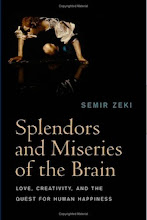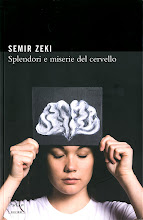The Venice Biennale is, according to most accounts of it, an
exhibition of the latest in contemporary art. But this year it appears to have
taken contemporary art to new and unheard of dimensions.
Apparently, the aim of the biennale this year is to enquire
into “how art reflects the nature of our imaginings”.
So far, so good.
But then come all these indigestible phrases about “atomized
space” from which to create a “molecular space”.
Beginning to sound somewhat dodgy?
Well, it gets much worse.
It takes imagination of the tenth power to make the
centrepiece of the biennale this year the - wait for it – continuous reading by
professional actors, over a period of seven months, of Karl Marx’s Das Kapital. Apparently this will allow
us to create an “interpretive concept” through which “to reflect on these
incredible times”. The ultimate aim, apparently, is to move from a state of
continual transition to a state of harmony, where presumably things have
settled down to allow us to experience heavenly bliss.
The first thing to say about this is that it must be
crushingly boring to listen to seven months’ worth of continuous reading of Das Kapital, whatever truths it may or
may not articulate. I mean even Shakespeare will not pass that test.
But next, I somehow doubt that even Marx believed that we
will end up in a state of harmony, where all struggles will cease. He was,
after all, an admirer of Hegel.
Since contemporary art is now being appropriated in the
service of politics, it is worth recalling that Marx was an avid reader, and
among his favourite authors was Balzac.
It may have been more appropriate to use some of Balzac’s
masterpieces to explore the dilemma of continual conflict resulting from our
natural tendency to exploit. It would have certainly been more entertaining.
Whether Balzac could pass the test of continuous reading over 7 months is,
however, another matter.
For in Balzac’s pages one will find that it is not only the
bourgeoisie that exploits the proletariat; rather, exploitation is part of our
constitution, our neurobiological make-up.
In Balzac’s pages, the rich exploit the poor, but they also
exploit each other. The poor do likewise. Women exploit men, and men exploit
women. And that most extraordinary creation of Romanesque literature, Balzac’s
Vautrin (who, Balzac tells us, is like a vertebral column that runs through
three of his most famous novels) exploits everyone in his efforts to dominate
society.
The will and capacity to exploit, and dominate, is part of
our neurobiological constitution.
Marx understood this
well.
In The Communist
Manifesto (Chapter 1), he writes that “the bourgeoisie
is itself the product of a long course of development, of a series of
revolutions in the modes of production and of exchange”; he well understood
that “it [the bourgeoisie] was an oppressed class under the sway of feudal
nobility” and how, with increasing power, it turned oppressor.
And of course, exploitation being in
our very nature, whenever the opportunity presents itself, the exploited become
the exploiters. Doesn’t the communist revolution show this admirably?
Perhaps a rendering of Balzac’s Harlot High and Low would have been a
better choice when appropriating art in the service of politics. It would
certainly have been a lot more entertaining.
So, as far as I am concerned, it is a
big “Ciao” to Venice this year.









 Contact us
Contact us